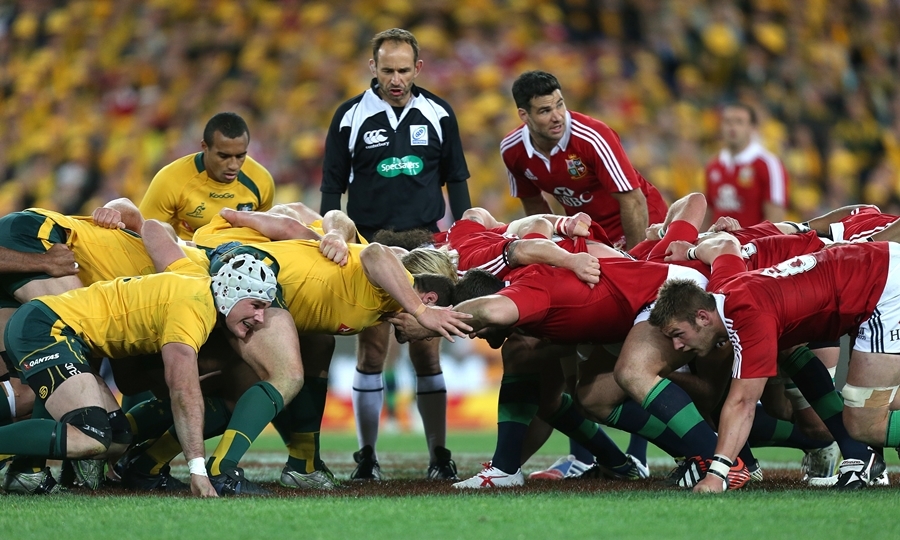Spending the vast majority of my working life immersed in the world of football, it is all too easy to miss out on what is happening in the sport that occupied so much of my attention as a teenager and an adult rugby union.
Which was why as I settled down to watch the opening games of the Southern Hemisphere’s Rugby Championship I was surprised to find that there was a whole new protocol in operation at scrum time.
Collapsed scrums are one of rugby’s major blights a source of intense irritation and frustration for spectators as well as a lazy and dangerous way for weak front-rowers to take the easy way out.
It did not require a scrummaging expert to see where the main problem lay.
The importance of the initial hit as the two front-rows came together had become an all-consuming area targeted by coaches however the physics of the collision ensured that it was all too easy for the two sets of forwards to fold in and collapse.
Working out who was to blame was a virtually-impossible task for officials and more than one ref even at the highest level of the game has handed out penalties and free-kicks on a “it’s your turn” basis.
From personal experience, I have known props who have completely dominated an opponent to deliberately collapse a scrum to con the ref into thinking that the weaker player was to blame and award a penalty.
The cynical would say that ploy was simply smart play but collapsed setpieces had become a plague on the sport amazingly only 40% of scrums were successfully completed in last season’s Six Nations.
Something had to be done and the IRB has acted, bringing in a new engagement with refs now demanding, “crouch, bind, set”.
The big difference is the bind with the two front rows fully engaged before the pushing can begin on the word “set”.
That is intended to provide a more stable platform and to prevent collapses.
The other main change is the insistence that the ball is put in straight by the scrum-half.
I always thought that WAS one of the laws of the game but it had long been ignored with No.9s feeding straight into the feet of the second-rows.
I noticed former Wallaby hooker Phil Kearns complaining that the new ruling on straight feeds favours the team not in possession as they can shove with all eight men.
In the “good old days” that was something which was just part and parcel of the game with the two props and the rest of the forwards fully aware that they had to work extra hard when their hooker was striking for the ball.
That ability to hook while the opposition tried their damndest to disrupt was a real art form and one that has been largely forgotten.
I was lucky enough to play with some great hooking practitioners such as current Scotland manager Gavin Scott and while propping was never for the faint-hearted, I always felt the men who wore the No.2 jersey were a little bit like football goalkeepers totally mad to play in the position they do!
Hopefully, the new ruling will see the return of true hooking skills.
The new engagement though has led to concerns that there will be less need for huge props and locks with a depowering of the scrum.
I don’t agree. If anything, with the initial hit no longer being of primary importance, the back five will actually have to shove, hopefully creating more space for backs to work their magic and entertain.
And technically proficient props should have nothing to fear from the new rulings.
Yes, there are bound to be teething problems as everyone adjusts to the brave new world but I genuinely believe that it is a worthwhile experiment which could have real long-term benefits for the game.
As ever though in rugby, there is still a huge amount of pressure on the officials to police the scrum correctly.
Refs are only human but unlike in the recent past there can be no room for individual interpretation there has to be uniformity in Southern and Northern hemispheres.
Hopefully the new protocols will prove a success certainly, keeping the frustrating and dangerous status quo was simply not an option.
